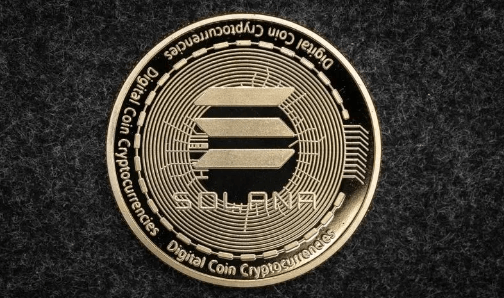Solana’s Price Surges by Almost 6%, Outperforming BTC, ETH and Other Major Coins

In the calm of early Monday, while the majority of major cryptocurrencies exhibit little to no movement, Solana has emerged as a standout, registering a near 5% increase over the last 24 hours.
Currently priced at $154 on Gate.io, Solana has seen a weekly rise of more than 12%, according to data from CoinGecko. Despite experiencing significant fluctuations within the month, dropping from a peak of $184 to a low of $120, the currency has recently shown a rebound, outshining gains seen by its peers, Bitcoin and Ethereum.
Token price analysis
During the same 24-hour period, Bitcoin has decreased slightly by over 1% to $63,650, and Ethereum has dropped by more than 2% to $3,092. Over the last week, Bitcoin managed a modest increase of 1.3%, whereas Ethereum saw a decline of 2.6%.
Looking at the broader cryptocurrency market, including the top 100 coins by market cap, a few notable risers are associated with the Solana network. The Jupiter exchange aggregator token, JUP, has increased by 6% to a price of $1.14. Similarly, the meme-themed Dogwifhat (WIF) has ascended nearly 5% to $3.43.
The resurgence in Solana’s market performance coincides with heightened activity on its network. A record-setting spike was noted on Saturday, with 14,648 new tokens minted on Solana via the SPL standard, according to Solscan data. Furthermore, the past two weeks have consistently seen over 10,000 new tokens created daily on the network, indicating robust and ongoing interest.
Solana and its consensus mechanism
Solana is portrayed as a high-performance blockchain platform known for its incredible speed and efficiency, designed to support decentralized applications (dApps) and cryptocurrencies. Developed to facilitate decentralized finance (DeFi) solutions, decentralized apps, and smart contracts, Solana aims to improve scalability through a unique combination of consensus mechanisms that dramatically increase transaction speeds and reduce latency.
The core of Solana’s architectural innovation is its hybrid consensus mechanism, which blends Proof of Stake (PoS) with a novel protocol known as Proof of History (PoH). This combination not only ensures the security and decentralization of the blockchain but also enhances its throughput and efficiency.
Proof of History (PoH) is a distinctive feature of Solana, acting as a cryptographic clock that provides a way to automatically order events or transactions on the blockchain without requiring the consensus of all network participants. This is achieved by encoding the passage of time into the blockchain itself. PoH works by having a verifier process a sequence of computational steps that generate a unique output that can be publicly and efficiently verified. Each output serves as a proof that the computation—and therefore time—has indeed passed. This timestamping prior to entering transactions into the ledger significantly reduces the overhead and complexity involved in the agreement process, which in traditional blockchains requires massive amounts of communication and time.
On top of PoH, Solana utilizes a traditional Proof of Stake (PoS) model where validators stake their own tokens as collateral for the chance to validate new transactions, add them to the blockchain, and earn transaction fees and additional tokens as rewards. The PoS layer of Solana ensures security and participant incentivization, creating a dynamic system where validators are chosen based on the amount of Solana’s native token, SOL, they are willing to lock up in the network.
Together, PoH and PoS on Solana allow for a significant reduction in the latency and an increase in the transaction throughput compared to purely PoS-based blockchains. This innovative structure makes Solana one of the fastest blockchains, capable of handling tens of thousands of transactions per second, a capability that is particularly attractive in fields such as DeFi and commercial applications where transaction speed and finality are critical.
Network outages do not concern the investors
Solana has experienced a number of network outages that have highlighted challenges in its operations, despite its advanced technology and strong market presence. These disruptions have included a significant 19-hour downtime in February 2023 and another five-hour interruption later in the year. These incidents were primarily due to issues such as an overload of transaction requests and software glitches that caused problems in block propagation and consensus mechanisms.
These outages have led to a critical reassessment within the Solana community, prompting efforts to enhance the network’s stability and resilience. Solana’s developers have been actively working on long-term solutions to address these issues, including deploying a dedicated “adversarial team” to stress-test and bulletproof the network against such failures. This shift indicates a more cautious approach, moving away from the Silicon Valley ethos of “move fast and break things” that previously characterized their rapid development cycle. This initiative underscores a strategic pivot towards prioritizing reliability and user trust, aligning with broader industry trends that emphasize the importance of network stability.
